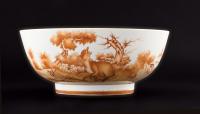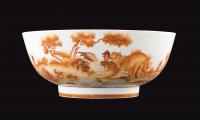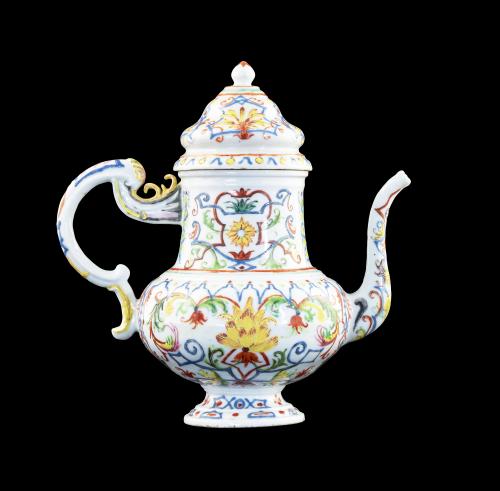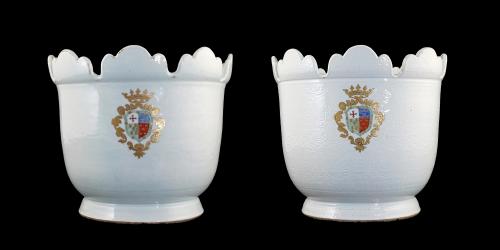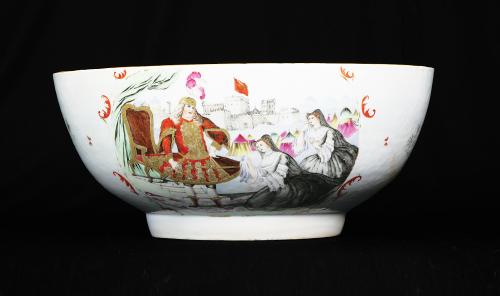
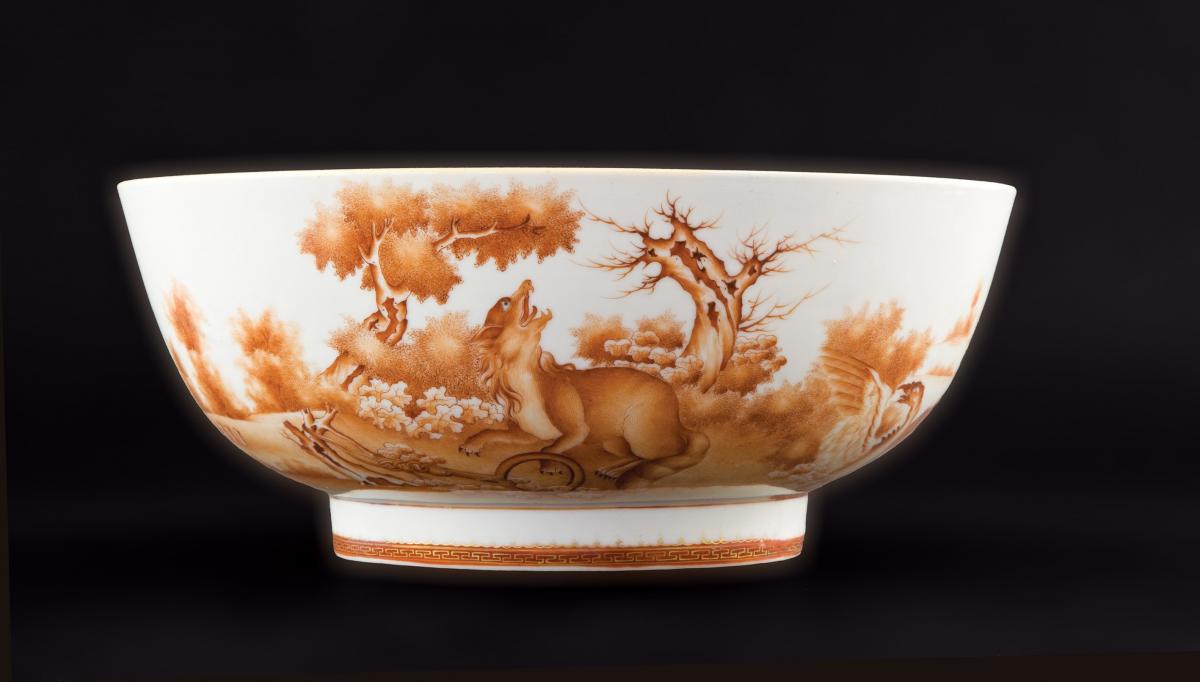
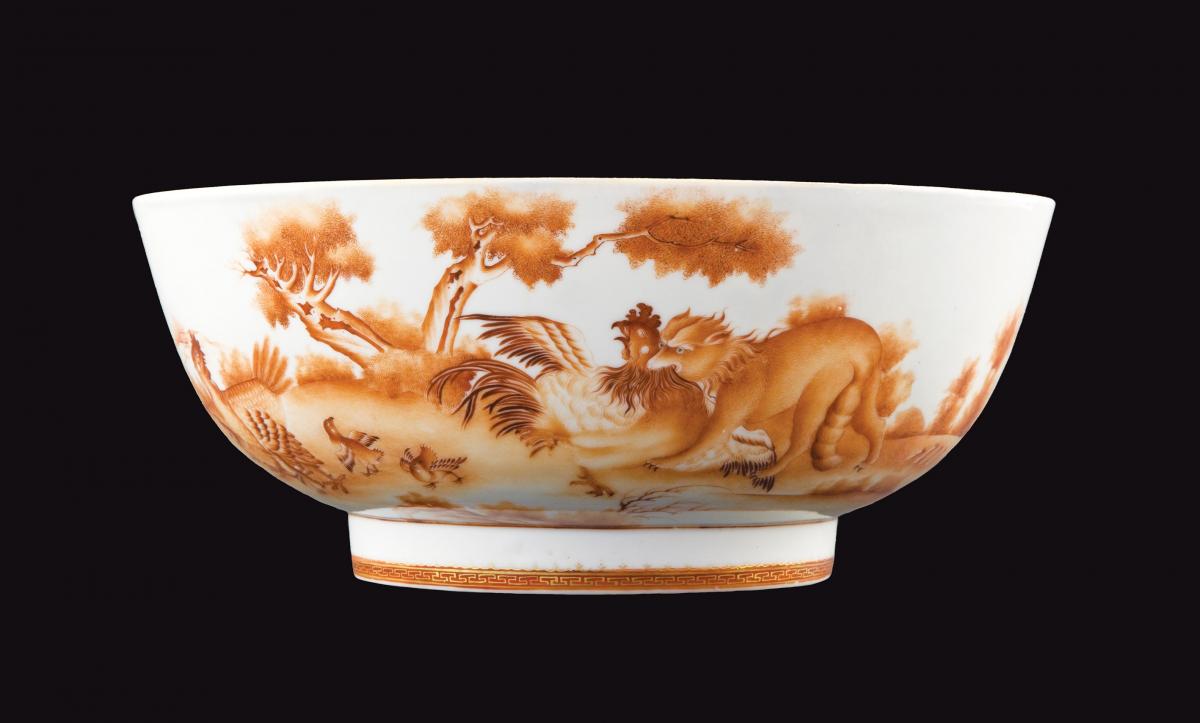

This object is eligible for a Certificate of BADA Provenance
The BADA Standard
- Since 1918, BADA has been the leading association for the antiques and fine art trade
- Members are elected for their knowledge, integrity and quality of stock
- Our clients are protected by BADA’s code of conduct
- Our dealers’ membership is reviewed and renewed annually
- Bada.org is a non-profit site: clients deal directly with members and they pay no hidden fees
Qianlong period circa 1790
European Market
Diameter: 11½ inches; 29cm
An extremely rare Chinese export porcelain bowl very finely painted with scenes of foxes, chickens and a swan in rouge-de-fer, the interior with a roundel of two phoenixes (fenghuang).
This late 18th century bowl has two scenes on it, one of a fox catching a rooster, watched by a hen with her chicks - and another with the fox caught in a trap with a startled swan and her cygnets nearby.
This design is known as the ‘fables’ pattern as it is thought to show an illustration from Aesop’s Fables or those of La Fontaine. However the scenes don’t appear to have a narrative and there is no fable that fits this pair of events.
The style is close to the work of the artist Jean-Baptiste Oudry (1686-1755) who produced a range of drawings, engraved by Charles-Nicolas Cochin for an edition of Jean de la Fontaine’s Fables Choisie, mis en vers, (1755-9). This is not from that edition, but looks similar.
An image by Francis Barlow of a House-Dog and a Wolf from a 1667 edition of Aesop’s fables is found on Chinese export porcelain and several images of Contes et Nouvelles by La Fontaine are known on plates.
A large export punchbowl (circa 1790) with these two scenes in panels but with simpler vegetation, was sold at Christies New York in 2005, though that bowl had the ‘Collapsed Hussar’ scene in the centre.
About fifteen years ago a pair of large oils on canvas, painted in grey with carved 18th century-style frames appeared at auction in Budapest, described as ‘after Jean-Baptist Oudry’. They clearly show these exact scenes but it has not been possible to trace any originals by Oudry.
New research has since shown that these two images are taken from prints by Gilles Demarteau (1722-76) after a series of animal drawings by Charles Dagomer (c1700-c1768). Nos 22 and 23 in the series are these two scenes (see illustration).
The prints are in a technique called ‘sanguine’, imitating red chalk drawing, that was much used by Demarteau. This explains the unusual use of the iron red monochrome on the bowl. Other prints by Demarteau are also known on Chinese export porcelain, including two after Jean-Baptiste Marie Huet (1745-1811) who was a pupil of Dagomer.
References: Litzenburg 2003, p182, the Barlow image on a cup and saucer; a pair of Chinese export porcelain plaques are also known with these images; Locquin, Jean 1912, Catalogue Raisonné de Jean Baptiste Oudry (Pub: Paris, H Champion), No367, a picture of swans with young surprised by foxes, sold in 1875; No 779, a pastel study of a fox in a trap, sold 1773; No 332, a fox catching a rooster, with hen and chicks nearby, painted for M de Trudaine at the Château de Montigny, exhibited: ‘Salon de 1748, No 25’, similar to one in the Wallace Collection (CR 357) and another sold in 1777 in the Vente Conti (CR 364); Rijksmuseum Collection, Nos: RP-P-1928-176 & 177, the Demarteau prints.
Dimensions
Diameter: 11½ inches; 29cmStock number
6360The BADA Standard
- Since 1918, BADA has been the leading association for the antiques and fine art trade
- Members are elected for their knowledge, integrity and quality of stock
- Our clients are protected by BADA’s code of conduct
- Our dealers’ membership is reviewed and renewed annually
- Bada.org is a non-profit site: clients deal directly with members and they pay no hidden fees


